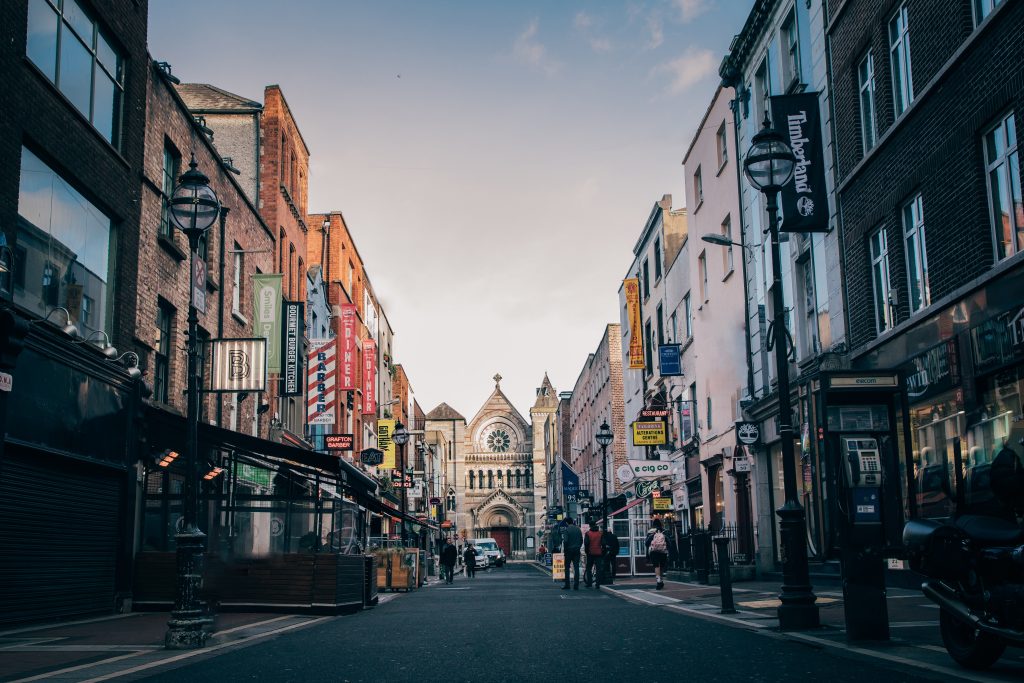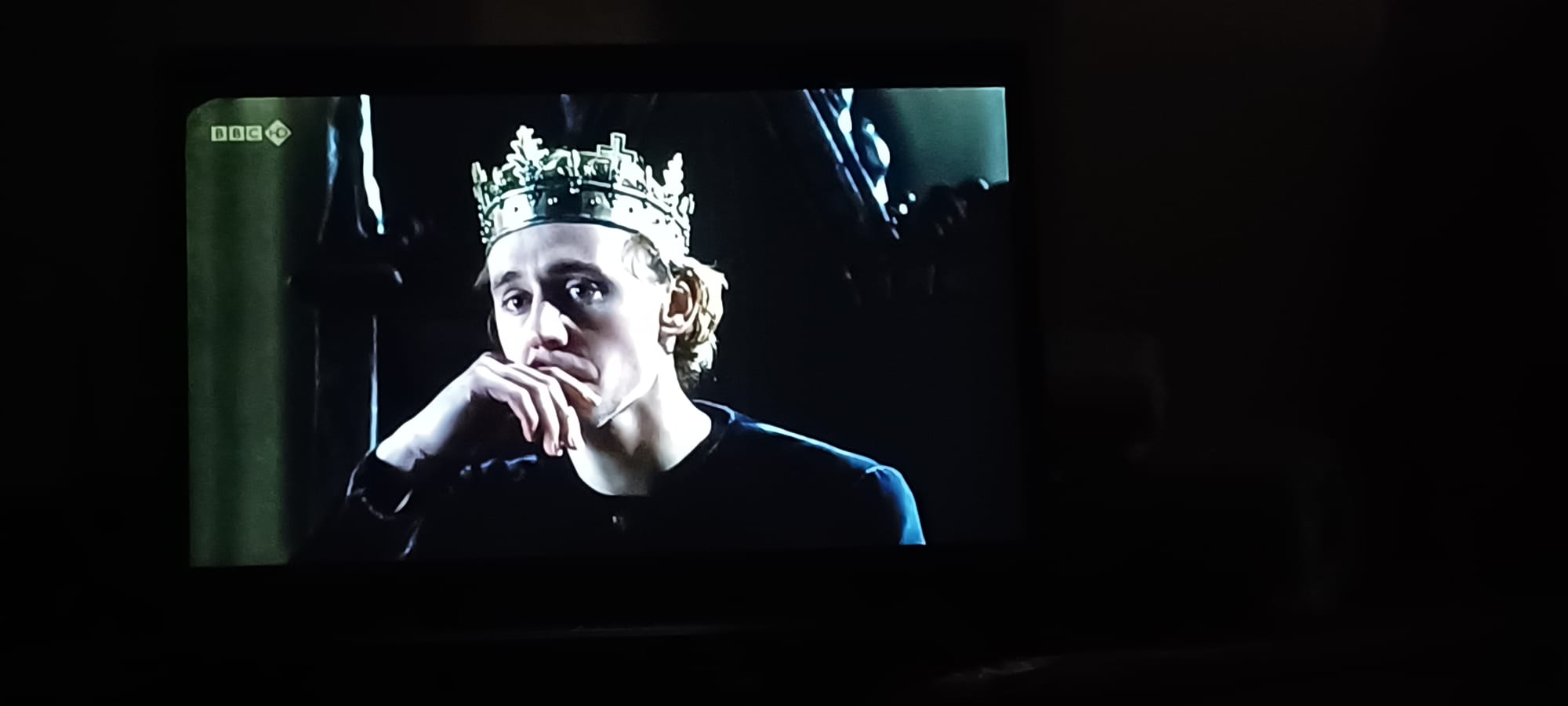
Anne Street, Dublin – Photo by Gregory DALLEAU on Unsplash
I do actually think about things other than Shakespeare when I’m prepping for an essay. From time to time I pen and post them. Today is the anniversary of the Good Friday Agreement, which took effect on this day in 1998, a quarter century ago, and before many people were born who are alive today.
The unrest between Ireland and Great Britain cast a long shadow over my childhood and adolescence. Along with the Soviet invasion of Afghanistan, Israel and Palestine with the Hizbollah and Mossad, civil terrorism (the Achille Lauro and Terry Patterson come to mind), Libya and the Iran-Iraq war, and the SALT treaties and continuous summits with Ronald Reagan and Mikhail Gorbachev, I followed these events with something between fascination and terror. My conscience awoke in strange ways, without context, with little conversation. In the pre-internet era, we watched hours of network news in both the morning and the evening, milling about the kitchen, making meals, sitting at table or at “the breakfast bar,” the tv droning in the background.
Bobby Sands. He died in 1981, when I was 7, younger than my daughter is now, but I watched the news and struggled to understand the concept of a hunger strike. So he just stopped eating on purpose? Yeah, shrugs. He’s a political prisoner. A political prisoner? I echoed. What is that? When someone is imprisoned for their thoughts. For their thoughts? This terrified me. Bobby Sands stopped eating and was on the news every night of his hunger strike until he slipped into a coma and died. For his thoughts. But the nature of his exact thoughts wasn’t really clear to me. Obviously, they were terrible. But to starve himself? What thoughts were worth starving oneself?!
The IRA and the bombs, the troubles and the checkpoints, all came to our home in images via ABC, NBC, CBS. (I fancied Peter Jennings the most but all the anchors looked more or less the same.) The talk went on and on, so much so that people lost the thread, like what happened with the war in Yugoslavia in the nineties, or what is happening with Ukraine today. It was a lot to keep track of, and there was so much context that I – we – didn’t know. There were Troubles. They started in Ireland but traveled to Britain. (Speaking of missing context …) The troubles killed a lot of people, innocent people. This was what I knew. What I thought I knew.
And yet Ireland lives richly in the American imagination, even for people who claim to Irish heritage. Like Italy, Ireland entered the collective subconscious as a place remembered, a place to return to. But I had never even met an actual Irish person until I studied abroad in Santiago in 1993. An Irish boy from the well-off Dublin suburb of Howth ran in my group of friends. He was dating a girl from Asturias with a faint mustache who looked about thirteen but didn’t seem so different from my school friends where I grew up – comfortable, confident, privileged. He belonged to a yacht club and continued to dress in Santiago as though he might pop down the harbor in his deck shoes and collared polo. The Troubles didn’t seem to bleed south into the Republic. They were strictly limited to Northern Ireland. Two other Irish girls were in Santiago too, with the most Irish names ever – Eimur and Maureen – wearing brogues and skirts, with haircuts that aged them well beyond their twenty years. There were serious and officious and taught a lot of English for cash. Looking back, they were clearly less privileged than our yacht club friend, and very likely needed the money to finance their time in Spain. Looking back, it is clear that my historic perspective was my only blind spot; I had plenty to learn also about financial security and privilege.
Ireland lived in my imagination, nourished by the stories and good humor of my Irish friends. I wanted to go for myself. Two years later, in the summer of 1995, I took a ferry from Scotland to Belfast. I was wary but felt that it would be fine. What attention could I possibly draw? A young backpacker from Belfast whom I met on the ferry assured me I would be fine, that she too got itchy feet and felt the need to see things for herself. I stayed in the student residence in Queen’s Elms. The receptionist tutted and remarked, The Americans always do this, stay here, and go to Dublin. His big-bellied friend shook his head too. They looked at me pityingly and gave me a key to a Formica-paneled room with a view of leafy trees.
I walked around town. I ate in a McDonald’s. I didn’t really know what to do. I didn’t know anyone there, and it wasn’t a time that anyone would have given a walking tour because crosstown traffic didn’t really exist between East Belfast and West Belfast. I looked at graffiti of people in balaclavas with machine guns and grenades, the competing flags of Ireland and the UK. I tried to puzzle it out, but being neither British nor Irish, I had nothing. (Frankly I don’t think they could have puzzled it out either.) I walked back to the train station one hazy summer morning a few days later to go to Dublin, to visit my friend Paul from Santiago days.
Howth was a world away from Belfast, even more than I expected. Paul and his friends hosted me warmly, with dinner parties and sailing trips and nights out at pubs. No one in Dublin even mentioned Belfast or the north. If they asked me where I had come from, and I said Belfast, they nodded and took another sip from their pint glass. There was a lot of craic. This continued in my time around Ireland. Galway, Tralee, Dingle, Cork: gorgeous places that may as well have been on another planet compared to Belfast. Little to no connection was discernible between the North and the Republic. I felt very much at home in the culture, with Paul and his friends, and was also glad I had been to Belfast, although I did not feel at home there. People talked about Belfast like it was a black hole yet it was a city like many others, with student residences and streets, fast food and sidewalks. I took my leave of Ireland with regret, boarding a ferry in Cork bound for Roscoff, France.
I landed in Strasbourg for a year, continuing there my lay education in Irish politics and a hundred other topics, including but not limited to identity psychology, academia, gender, feminism, desire, halal menus, le café the place and le café the beverage, the benefits of a prix fixe menu and the pleasure of a small carafe of house wine, Roman history, church history, Mitteleurop’s Jewish heritage, and world literature in general. I befriended an Irish woman from Belfast named Sandra, pale and soft-spoken but with an earnest, hard-won truth. She did not want to talk much about Belfast but I gathered from her other opinions that she knew how things might be repaired if only people would listen with patience before they spoke. I read some of the papers that Sandra submitted to her French professors and was shocked at the level of cultural truth she was willing to express in writing to someone who would be grading her paper (leurs petits domains, their petty domains, is one phrase that really stuck with me). I never once felt empowered to be so honest in writing in my many years of education in America. But Sandra simply shrugged. It’s true, she said. So what. I wrote it.
My next-door neighbor Jane was an ebullient Londoner with curly red hair, far more willing to wade into speech debate and explanation than our friend Sandra. Jane taught English in French schools as part of her credit for her FLE (français langue étrangère, French as a foreign language) and one of her lesson plans featured the conflict in Ireland. I admired her gumption and asked her to lecture me. She started in with gusto, curls bobbing. What do you think they’re going to do? she asked. This all started four hundred years ago when English people were forcible resettled in Ulster. That’s longer than most Americans have been in America. Do you think they’re less Irish for being Protestant? Do you honestly think that the UK can go to Northern Ireland and now remove all those people? I admitted it seemed unlikely at best, unfair at worst. She tapped her fag and drank her tea. People don’t know this, she said. I told her she should take her show on the road. Jane Explains. Other English friends in Strasbourg who did not share Jane’s perspective trotted out rather more shocking pronouncements about the Irish culture and its people, claiming they were “predisposed to violence and murder.” Jane had returned home to London by the time I heard these statements. I didn’t know how to respond to these more entrenched opinions from people who had never been to Ireland and didn’t know any Irish people. One can only conclude what information those friends received from the British network news in the eighties. My experience was very much informed by American network news and the oddly American celebrations of the American version of Irish culture that takes place in every classroom in the month of March thanks to St. Patrick’s Day.
My 1995 trip, a touchstone for me still today, found me in Belfast before the Good Friday Agreement (passed in 1998) and in Zagreb before the Dayton Accords (ratified in 1995). I don’t really know what I was doing in those places. A part of me yearned to be the war reporter Martha Gellhorn (maybe minus the Hemingway marriage and divorce), and in some ways I might have been.
The Good Friday Agreement was not perfect, but it was also – and importantly – ratified in a referendum in both the Republic (94% yes) and in Northern Ireland (71% yes). Loose ends dangled that remain sticking points to this day. Sectarian prisoners who had been convicted of violent crimes were released from prison. And no one could have foreseen the biggest sticking point of all, the passing of Brexit, which made the border between Northern Ireland and Ireland the border between the UK and the EU.
It was understood that the Good Friday Agreement would not bring about an immediate peace. Everyone knew it would take time. I confess I did not fully understand this when I listened to the news on NPR in 1998. The GFA planted seeds of re-knit community that leaders hoped would grow. The only way to ensure peace is to ensure that children grow up free from violence (America, take note!). Now, a quarter of a century later, the children born after the GFA are about the age I was when I found myself alone in Belfast. They grew up with a city that slowly knit itself back together, without guns, without bombs and barbed wire, the checkpoints dismantled and buses that move to and fro unhindered throughout its eastern and western halves.
In no way am I asserting here that I am any kind of expert on UK-Irish politics, Irish history, or British history. But in a decade when it was very important to me, for varying reasons, I had many personal points of contact with Ireland and Irish people which left their mark on me in every generous way. I came to some understanding of what previously had been only confusing and cloudy. And now, years on, seeing the fruits of that goodwill, it comes down to this: When we imagine peace, we have to be patient, and take small steps. And remember our children’s inheritance.




One Response
Your closing comment to your reflections about Ireland is so true. Peace-making is very hard and slow work. Now we must imagine something like this when considering Ukraine and Russia. Oh, how much more difficulty the making of peace will be in that conflict.